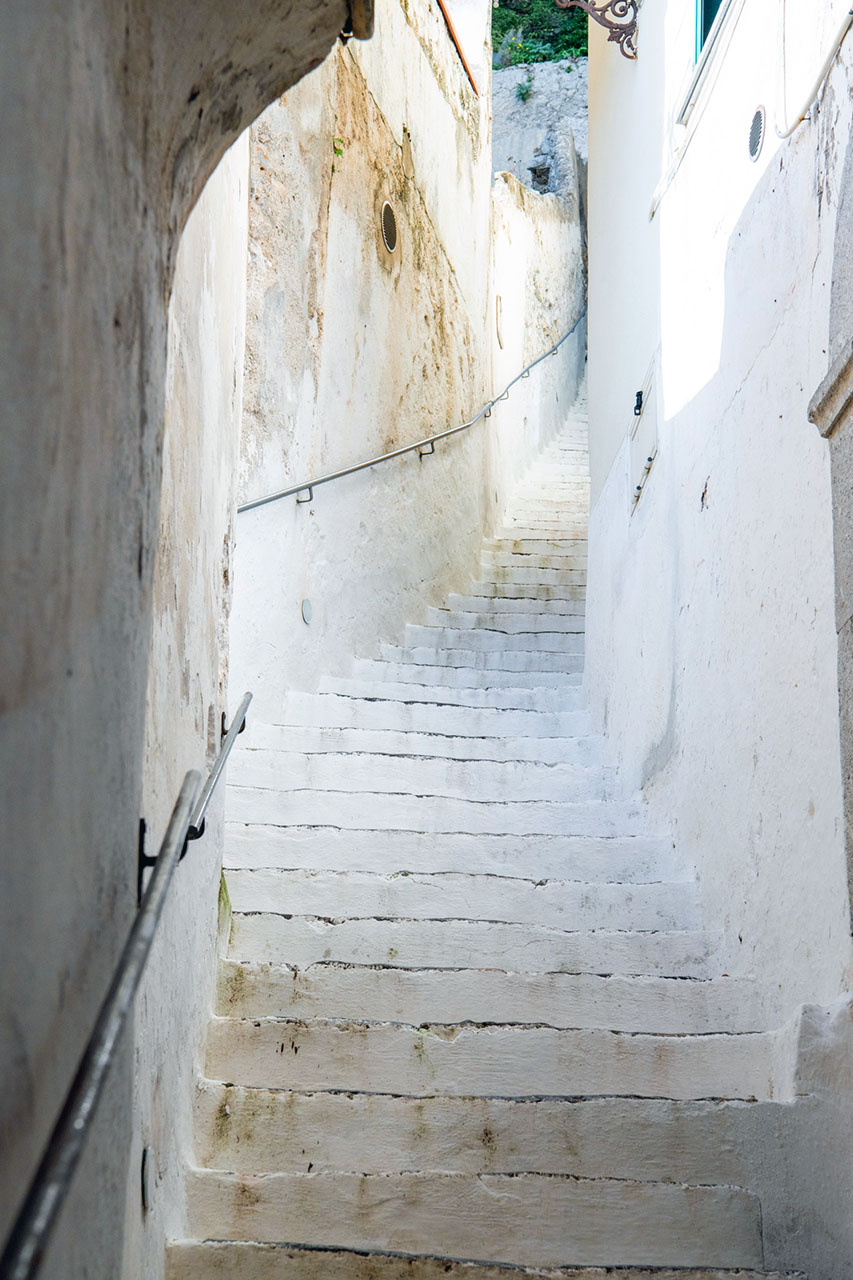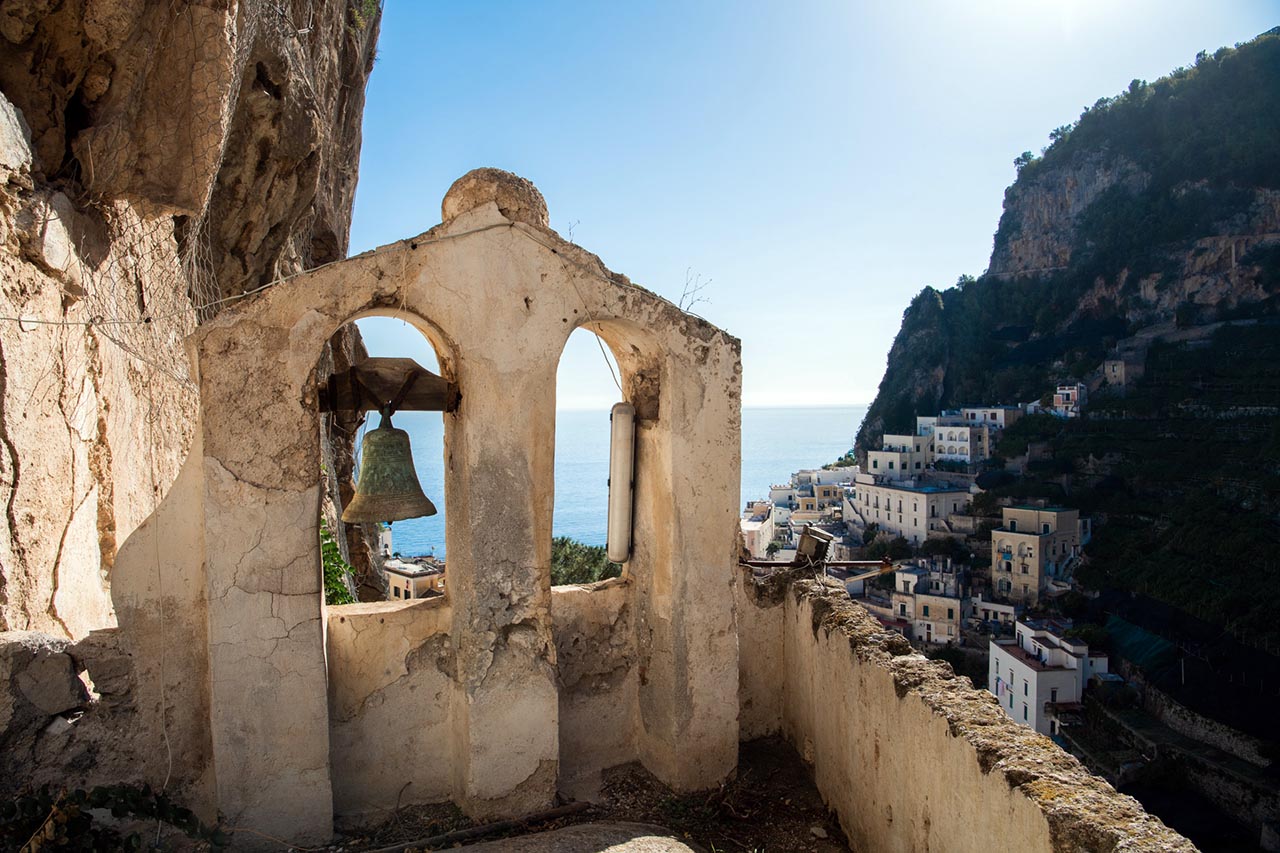Like a softly whispered secret, a uniquely charming site is nestled among the rugged rocks of Atrani.
June 10th, 2021, by Saveria Fiore. Photos by Vito Fusco. Reposted on November 9th, 2023.
The enigmatic beauty of the Church of Santa Maria del Bando is unveiled to us through the guidance of Giovanni Proto, the custodian of the Sanctuary. With his spontaneous historical vocation, he sketches the past of this area, narrating and steering the events like a puppet coming to life and projecting history into the present. Even more than from his words, his affection for his territory is evident from his silences, particularly his desire to bring to light this still relatively unexplored site.
“I’ve been in charge of this sacred place for 21 years now,” he says. “Back in 1999, the distinguished Monsignor Beniamino, Archbishop of Amalfi and Cava dei Tirreni, appointed me to this position.”
In the church, which is surrounded by greenery, Don Carmine, the parish priest of Atrani, regularly celebrates mass, keeping the religious flame alive.
Historical Origins of the Church of Santa Maria del Bando in Atrani
Lost in the vertical layers of Atrani’s neighbourhoods, you can still hear the echoes of the “bando,” which used to be intoned to the population below from the medieval church on Mount Maggiore during the time of the Maritime Republics. It’s no coincidence that even today, the current Sanctuary (since 1944, when Monsignor Rossini declared it as such) is known as Santa Maria del Bando.
The earliest records of the structure date back to 1187, and according to legend, it seems to be the vow of a condemned man spared by the Madonna.

An Uphill Path
Adorned in its sacred attire, the Sanctuary awaits visitors who climb about 750 steps, winding through the labyrinthine alleys of Atrani. Mr. Domenico (72 years old), a devoted local, has worn down those steps and still ascends them as if they were furniture.
“I climb these steps every day,” he says briskly, without breaking a sweat. “I go up to tend to the gardens beneath the Sanctuary and keep my days busy.”
Along the gentle ascent, within a curtain of heightened senses, the wild scent of alyssum and mint wafts through the air, like vapours from an ancient kitchen. In the segmented alleyways, you glimpse the intimacy of the local community and the scent of freshly washed laundry hanging out to dry.
“That’s the point where a fully lit comet is launched straight towards the cathedral on Christmas Eve at midnight,” reveals Domenico, stopping along the ascent at the spacious balcony of a house.

The Interlude
Amidst this nature, lemon groves certainly don’t lack, living up to the good name of the Amalfi Coast. Two young men, Alfonso and Salvatore, are busy fixing the stakes meant to support the pergola. Beyond the houses clinging to the rock and the views swallowed by the alluvial plain of the Dragon, the white house of Tommaso Aniello de Fusco’s mother, known as Masaniello, Antonia Gargano, is seen just before reaching the entrance of the Sanctuary.
Masaniello’s Caves still exist here, guarding his memory in the mystical silence that rules the area. It was the last refuge of the Captain General of the Neapolitan people before he was killed in the Church of Carmine in Naples on July 16, 1647.
And to this day, excavations aim to unearth ancient, silent memories in the cave.
Celebrating Christmas
Every year at Santa Maria, during the Christmas holidays, a skilled local craftsman assembles nativity scenes in small glass bells, which are then drawn by lot in January. The various shepherds of the nativity scene and the glass bell itself are purchased in San Gregorio Armeno, while the rest of the composition is the meticulous and creative work of the craftsman.
“This idea was born to finance the necessary restoration work, both on the Sanctuary and in the surrounding area,” Giovanni explains. “We started with the allocation of three nativity scenes in the first year. Then the initiative gained popularity, and today we have reached ten up for grabs.” Like any respectable festivity, after the rituals, the community gathers for a feast of pasta and beans and sweets, in that inevitable whirlwind of culinary abundance, almost emblematic of our southern land.
Hope for the Future
Mr. Domenico spends a good part of his day at the Sanctuary, dedicating himself to the care of the lush gardens at the foot of the church, with the distinctive energy of the “old school.”
Giovanni is always here too, contributing to ensure that the word spreads and the light of this gem can shine through.
“What I hope for,” Giovanni declares with hope in his eyes, “is that this place can become livelier, better known, and encourage people to come here on excursions, so it can achieve the recognition it deserves.”
